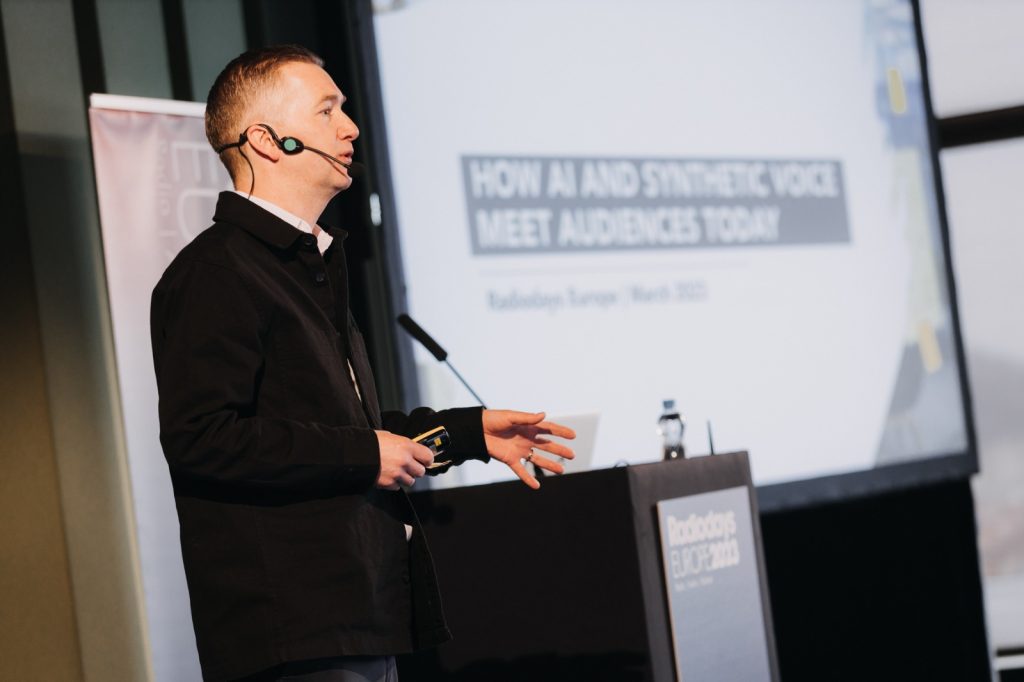When we talk about AI, we tend to look to the future, and sometimes we overlook what’s happening today. We see new examples of the practical use of AI on a daily basis, some are groundbreaking, but not everything that glitters is gold. “We have to be aware of the opportunities but also the risks,” pointed out the host, Olle Zachrison. Despite what we think of AI, we are entering a new territory, and these few examples show us how to start off on the right foot.
The team in Schibsted, around one of the speakers, Lena Beate Hamborg Pedersen, focused on the special learning needs of children. Kids absorb the subject matter best when they hear it, and Schibsted focused on just that. They created a synthetic voice using one of their podcast stars, who agreed to lend her voice for learning purposes. Now, any text in Norwegian can be read aloud by a soothing voice, a very helpful tool for all teachers as well as, for instance, people with reading issues. “The reaction was overwhelming,” relished Lena Beate Pedersen, with a pledge of further development.
Another instance of use is German-based RBB, which successfully introduced AI to power automatically generated weather reports using the synthesized voice of a well-known radio presenter.
Raoul Wedel demonstrated on-stage the possibilities of Adthos, a self-service AI-powered ad creation platform. This efficiently allows the production of much greater variety and thus personalization, which is key to successful advertisement. A drastic integration of AI can be seen in RadioGPT, which goes even a step further, being a 100% AI-powered radio, allowing a hyperlocalized and personalized listening experience.
With this multitude of examples already in use and many more expected to materialize in the near future, journalists are rightfully excited but scepticism remains. This is why it is necessary to keep in mind the proposed code for AI journalism: “Disclose when the media you have created or introduced includes synthetic elements, especially when failure to know about synthesis changes the way the content is perceived.”
You can and should use AI to help your strategic mission, whose final goal is always to serve the audience’s needs and make journalism better. But be cautious and transparent about how you do it.



